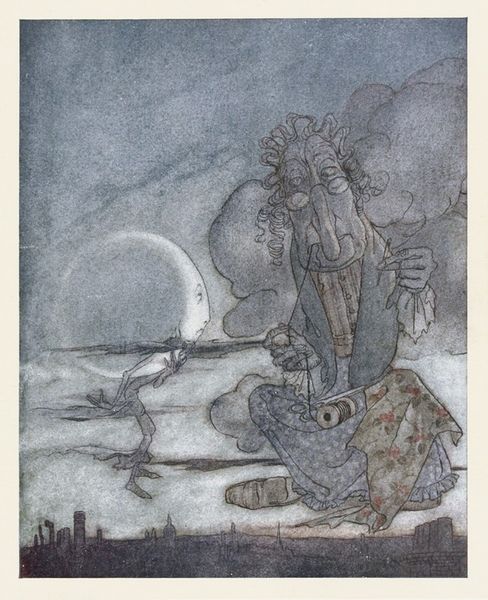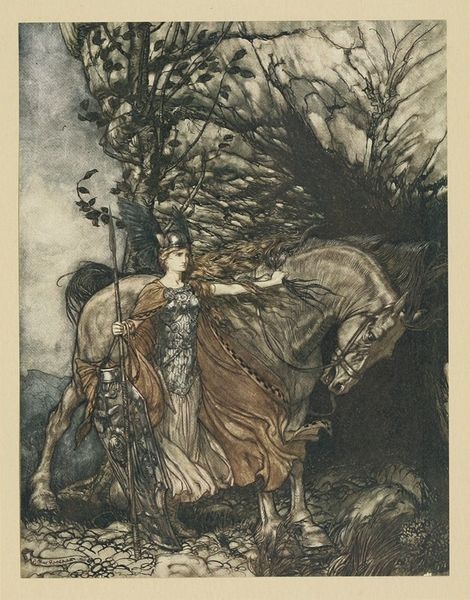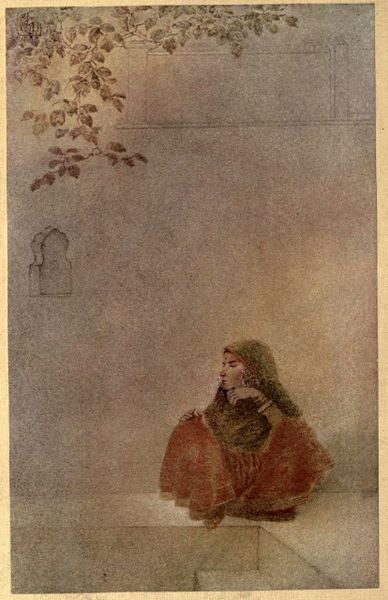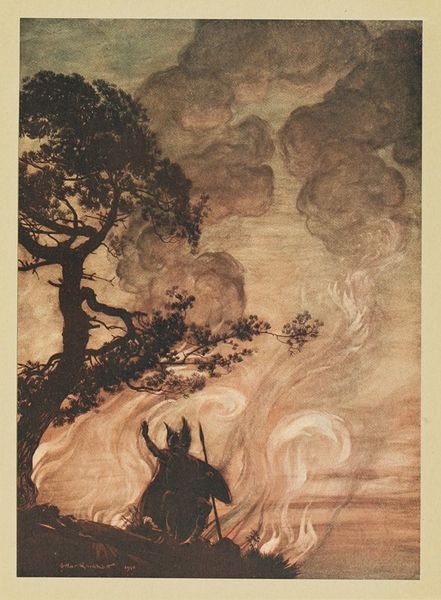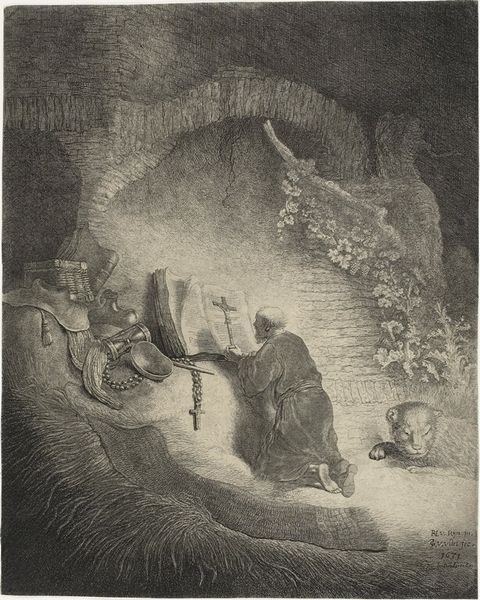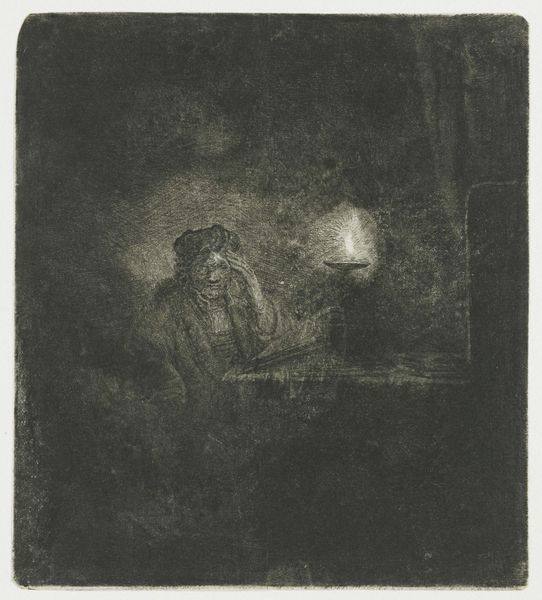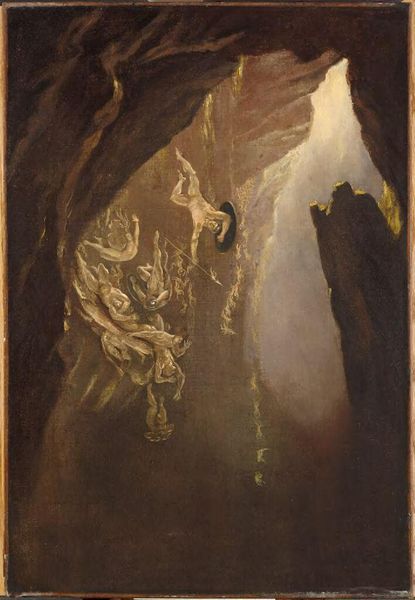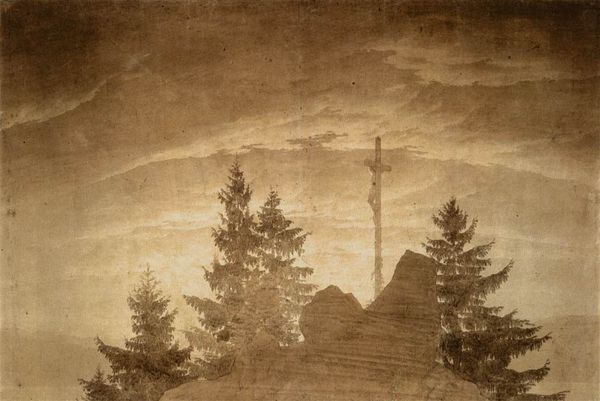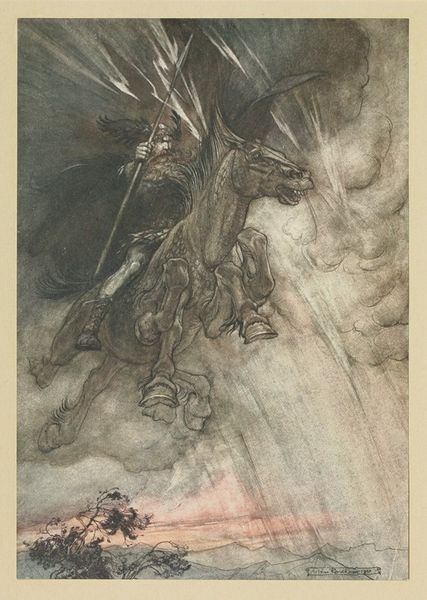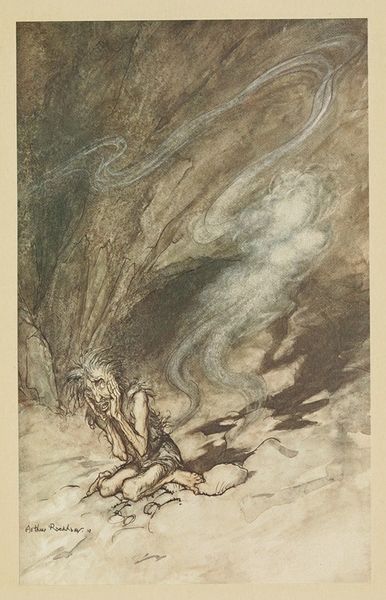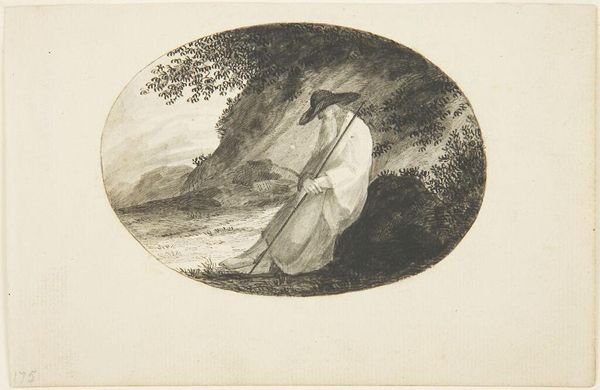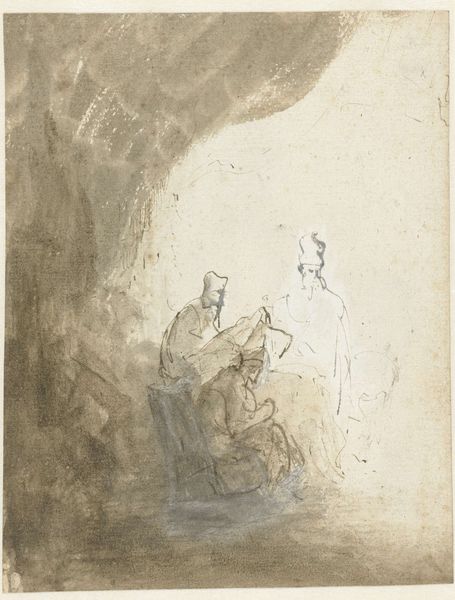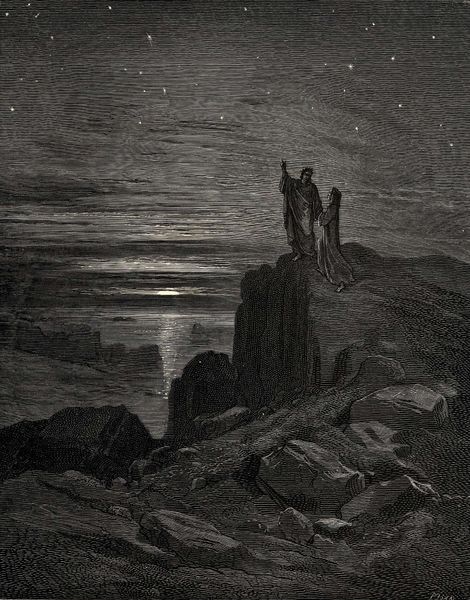
#
abstract painting
#
water colours
#
possibly oil pastel
#
handmade artwork painting
#
fluid art
#
underpainting
#
painting painterly
#
watercolour bleed
#
watercolour illustration
#
watercolor
Copyright: Public domain
Editor: This watercolor painting, "Asoka, who by the white stucco of his fame made spotless the universe," is credited to Abanindranath Tagore, though we don't have a date. The dreamy, almost ethereal quality, the muted colors...it all feels very symbolic. How do you interpret this work? Curator: From a materialist perspective, it's fascinating how Tagore utilizes watercolor to evoke such a weighty concept – the spotless universe created by Asoka’s fame. Watercolor, traditionally associated with landscapes and decorative arts, is here employed to depict something far grander. What does this choice of medium communicate to you? Editor: Maybe it suggests a fragility? That even the greatest legacies, like Asoka's, are rendered with ephemeral materials? The bleeding of the watercolour emphasizes that fluidity... Curator: Precisely! The "bleed" you pointed out in watercolour, typically considered a technical flaw, is intentionally exploited. We can ask if he is deliberately using ‘cheap’ or readily available materials to comment on the socio-economic position of image production and consumption. Editor: That’s interesting. I wouldn’t have considered it like that. I was mainly focused on just the artistic impact of that stylistic bleed... Curator: And note also the textural qualities; the layering and underpainting suggests the labour and physical acts performed by the painter. Can you speak more about the surface and technique? Editor: You’re right; up close, you can almost trace the artist's hand – how they built up the image, layer by layer. It definitely encourages a consideration of the process and all the techniques and materials necessary in the creation of the work, almost apart from any ‘symbolism’ attached to it. Curator: Absolutely. By focusing on the material processes and conditions of production, we gain a richer understanding that complicates our interpretation, moving beyond traditional aesthetic readings. I never considered those things. Thanks. Editor: Likewise. Examining the materials brings an unexpected layer of understanding!
Comments
No comments
Be the first to comment and join the conversation on the ultimate creative platform.
